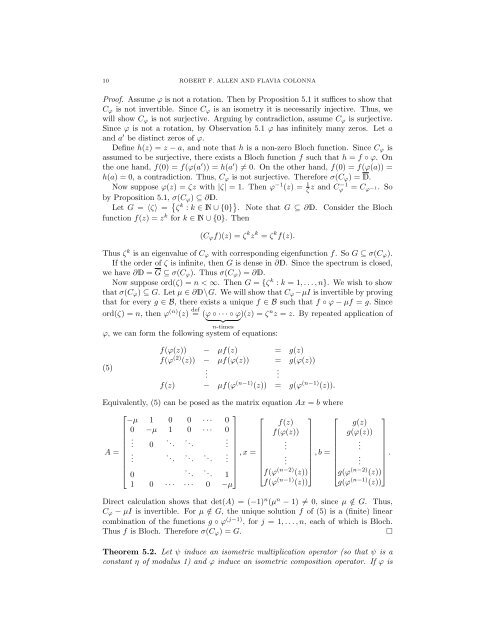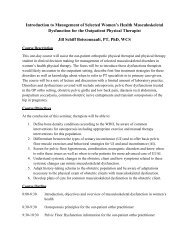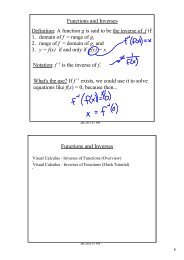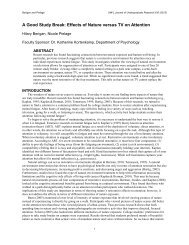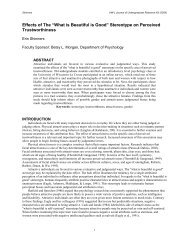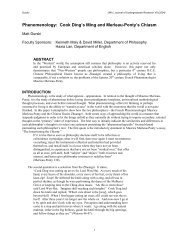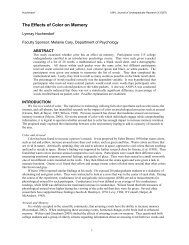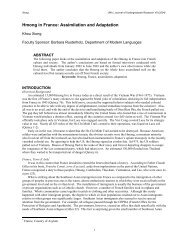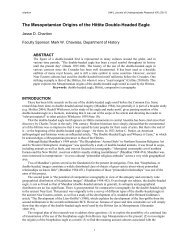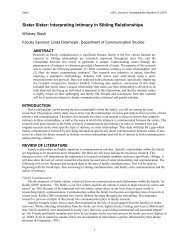Isometries and spectra of multiplication operators on the Bloch space
Isometries and spectra of multiplication operators on the Bloch space
Isometries and spectra of multiplication operators on the Bloch space
Create successful ePaper yourself
Turn your PDF publications into a flip-book with our unique Google optimized e-Paper software.
10 ROBERT F. ALLEN AND FLAVIA COLONNA<br />
Pro<str<strong>on</strong>g>of</str<strong>on</strong>g>. Assume ϕ is not a rotati<strong>on</strong>. Then by Propositi<strong>on</strong> 5.1 it suffices to show that<br />
Cϕ is not invertible. Since Cϕ is an isometry it is necessarily injective. Thus, we<br />
will show Cϕ is not surjective. Arguing by c<strong>on</strong>tradicti<strong>on</strong>, assume Cϕ is surjective.<br />
Since ϕ is not a rotati<strong>on</strong>, by Observati<strong>on</strong> 5.1 ϕ has infinitely many zeros. Let a<br />
<str<strong>on</strong>g>and</str<strong>on</strong>g> a ′ be distinct zeros <str<strong>on</strong>g>of</str<strong>on</strong>g> ϕ.<br />
Define h(z) = z − a, <str<strong>on</strong>g>and</str<strong>on</strong>g> note that h is a n<strong>on</strong>-zero <strong>Bloch</strong> functi<strong>on</strong>. Since Cϕ is<br />
assumed to be surjective, <strong>the</strong>re exists a <strong>Bloch</strong> functi<strong>on</strong> f such that h = f ◦ ϕ. On<br />
<strong>the</strong> <strong>on</strong>e h<str<strong>on</strong>g>and</str<strong>on</strong>g>, f(0) = f(ϕ(a ′ )) = h(a ′ ) = 0. On <strong>the</strong> o<strong>the</strong>r h<str<strong>on</strong>g>and</str<strong>on</strong>g>, f(0) = f(ϕ(a)) =<br />
h(a) = 0, a c<strong>on</strong>tradicti<strong>on</strong>. Thus, Cϕ is not surjective. Therefore σ(Cϕ) = D.<br />
Now suppose ϕ(z) = ζz with |ζ| = 1. Then ϕ −1 (z) = 1<br />
ζ<br />
z <str<strong>on</strong>g>and</str<strong>on</strong>g> C−1<br />
ϕ = C ϕ −1. So<br />
by Propositi<strong>on</strong> 5.1, σ(Cϕ) ⊆ ∂D.<br />
Let G = 〈ζ〉 = ζ k : k ∈ N ∪ {0} . Note that G ⊆ ∂D. C<strong>on</strong>sider <strong>the</strong> <strong>Bloch</strong><br />
functi<strong>on</strong> f(z) = z k for k ∈ N ∪ {0}. Then<br />
(Cϕf)(z) = ζ k z k = ζ k f(z).<br />
Thus ζk is an eigenvalue <str<strong>on</strong>g>of</str<strong>on</strong>g> Cϕ with corresp<strong>on</strong>ding eigenfuncti<strong>on</strong> f. So G ⊆ σ(Cϕ).<br />
If <strong>the</strong> order <str<strong>on</strong>g>of</str<strong>on</strong>g> ζ is infinite, <strong>the</strong>n G is dense in ∂D. Since <strong>the</strong> spectrum is closed,<br />
we have ∂D = G ⊆ σ(Cϕ). Thus σ(Cϕ) = ∂D.<br />
Now suppose ord(ζ) = n < ∞. Then G = {ζk : k = 1, . . . , n}. We wish to show<br />
that σ(Cϕ) ⊆ G. Let µ ∈ ∂D\G. We will show that Cϕ−µI is invertible by proving<br />
that for every g ∈ B, <strong>the</strong>re exists a unique f ∈ B such that f ◦ ϕ − µf = g. Since<br />
ord(ζ) = n, <strong>the</strong>n ϕ (n) (z) def<br />
= (ϕ ◦ · · · ◦ ϕ)(z)<br />
= ζ<br />
<br />
nz = z. By repeated applicati<strong>on</strong> <str<strong>on</strong>g>of</str<strong>on</strong>g><br />
n-times<br />
ϕ, we can form <strong>the</strong> following system <str<strong>on</strong>g>of</str<strong>on</strong>g> equati<strong>on</strong>s:<br />
(5)<br />
f(ϕ(z)) − µf(z) = g(z)<br />
f(ϕ (2) (z)) − µf(ϕ(z)) = g(ϕ(z))<br />
.<br />
f(z) − µf(ϕ (n−1) (z)) = g(ϕ (n−1) (z)).<br />
Equivalently, (5) can be posed as <strong>the</strong> matrix equati<strong>on</strong> Ax = b where<br />
⎡<br />
−µ<br />
⎢<br />
0<br />
⎢ .<br />
A = ⎢ .<br />
⎢<br />
⎣ 0<br />
1<br />
1<br />
−µ<br />
0<br />
0<br />
0<br />
1<br />
. ..<br />
. ..<br />
· · ·<br />
0<br />
0<br />
. ..<br />
. ..<br />
. ..<br />
· · ·<br />
· · ·<br />
· · ·<br />
. ..<br />
. ..<br />
0<br />
⎤<br />
0<br />
⎡<br />
f(z)<br />
0 ⎥ ⎢<br />
⎥ ⎢<br />
f(ϕ(z))<br />
. ⎥ ⎢<br />
⎥ ⎢<br />
⎥ , x = ⎢<br />
.<br />
. ⎥ ⎢<br />
⎥ ⎢<br />
⎥ ⎢ .<br />
1 ⎦ ⎣f(ϕ<br />
−µ<br />
(n−2) (z))<br />
f(ϕ (n−1) ⎤ ⎡<br />
⎥ ⎢<br />
⎥ ⎢<br />
⎥ ⎢<br />
⎥ ⎢<br />
⎥ , b = ⎢<br />
⎥ ⎢<br />
⎥ ⎢<br />
⎦ ⎣<br />
(z))<br />
.<br />
g(z)<br />
g(ϕ(z))<br />
.<br />
.<br />
g(ϕ (n−2) (z))<br />
g(ϕ (n−1) (z))<br />
Direct calculati<strong>on</strong> shows that det(A) = (−1) n (µ n − 1) = 0, since µ /∈ G. Thus,<br />
Cϕ − µI is invertible. For µ /∈ G, <strong>the</strong> unique soluti<strong>on</strong> f <str<strong>on</strong>g>of</str<strong>on</strong>g> (5) is a (finite) linear<br />
combinati<strong>on</strong> <str<strong>on</strong>g>of</str<strong>on</strong>g> <strong>the</strong> functi<strong>on</strong>s g ◦ ϕ (j−1) , for j = 1, . . . , n, each <str<strong>on</strong>g>of</str<strong>on</strong>g> which is <strong>Bloch</strong>.<br />
Thus f is <strong>Bloch</strong>. Therefore σ(Cϕ) = G. <br />
Theorem 5.2. Let ψ induce an isometric <str<strong>on</strong>g>multiplicati<strong>on</strong></str<strong>on</strong>g> operator (so that ψ is a<br />
c<strong>on</strong>stant η <str<strong>on</strong>g>of</str<strong>on</strong>g> modulus 1) <str<strong>on</strong>g>and</str<strong>on</strong>g> ϕ induce an isometric compositi<strong>on</strong> operator. If ϕ is<br />
⎤<br />
⎥ .<br />
⎥<br />
⎦


